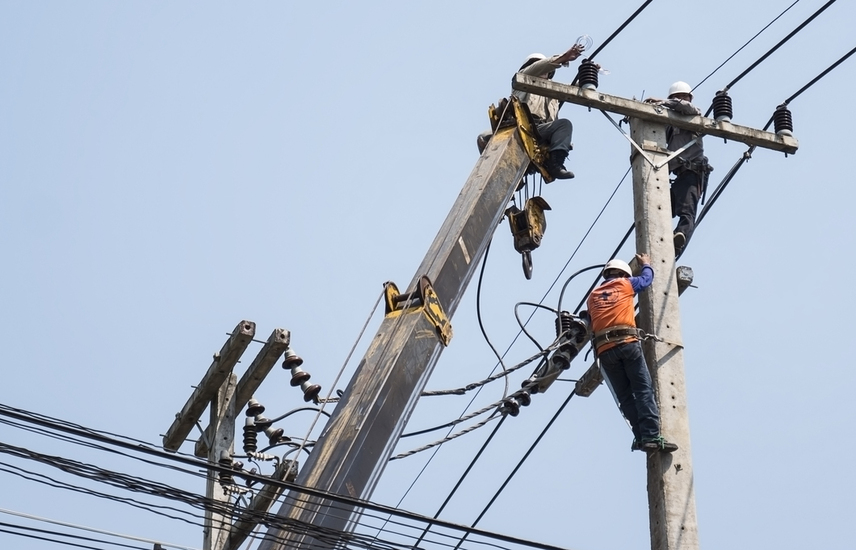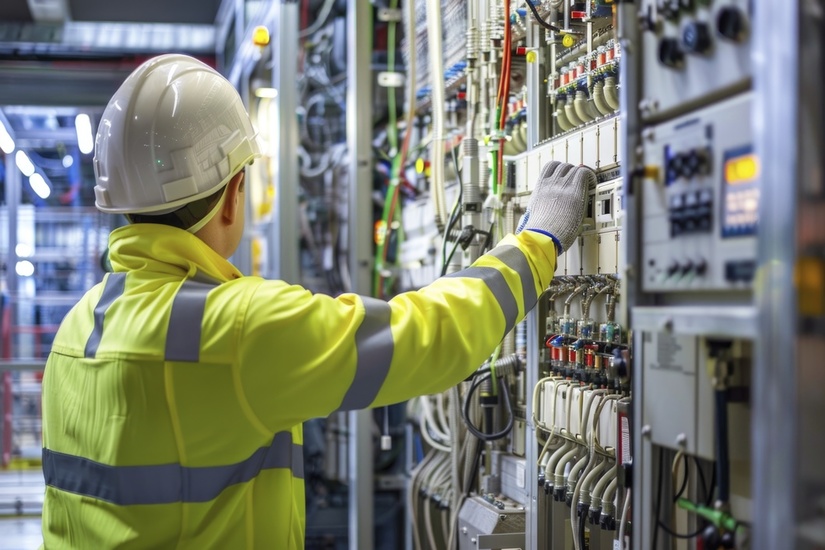Electricity is all around us. It powers our homes, schools, hospitals, and even the cars we drive. But not all electricity is the same. Some systems use higher voltage, which can be more dangerous if not handled properly. Recent examples of the Heathrow Airport Fire, or the Spanish and Portuguese blackouts show the immense impact to the economy and world that high voltage systems can have when they fail.
In this article, we’ll look at what high voltage electricity means, how it’s used, and why safety matters when working with these powerful systems.
What Is Voltage And Why Is It Important?
Voltage is the force that pushes electricity through wires. Think of it like water pressure in a hose. The higher the pressure, the stronger the flow.
Even at low levels, electricity can be dangerous. But as the voltage gets higher, the dangers increase. That’s why understanding voltage levels is important for safe working and proper handling of electrical systems.
Different Voltage Levels And What They Mean
To stay safe and organized, electricity is divided into different voltage categories. Each one is used in different ways.
Low Voltage (Up To 1,000 volts AC or 1,500 volts DC)
This is the kind of electricity used in homes, offices, and small machines. It powers things like lights, TVs, and kitchen appliances.
Even though it’s called “low,” it can still cause an electric shock or electrocution if you touch wires or parts that aren’t protected.
Medium Voltage (1,000 to 35,000 volts)
You’ll find this in industrial facilities, big buildings, and some outdoor systems. It powers heavy machines, elevators, and big air conditioning units.
Working with medium voltage requires special gear and training to stay safe.
High Voltage (Over 35,000 volts)
This level is found in power transmission lines and large electrical systems that move electricity over long distances.
High voltage electricity is very powerful and can be deadly if not handled with care.
In some countries, including those that follow the International Electrotechnical Commission, high voltage can start at just 1,000 volts. It’s important to know what counts as high voltage where you live or work.
Where Is High Voltage Used?
High voltage isn’t just one thing. It depends on where it’s being used. Here are a few examples:
- Power transmission: High voltage is used to move electricity from power plants to cities and towns. These transmission lines carry electricity over long distances to reduce energy loss.
- Factories and plants: Many industrial facilities use high voltage to power machines and tools. This includes motors, pumps, and large systems that need a lot of energy.
- Electric vehicles: Cars that run on electricity often use high-voltage systems, starting around 60 volts and going up to 800 volts. Even though this might seem low, it’s still dangerous and needs safety protocols.
- Planes and military equipment: These use special systems that also run on high voltage for things like radar and navigation.
There’s also something called extra high voltage (EHV), which means systems that use more than 345,000 volts. These are used to send electricity across entire states or countries.
Why Is High Voltage Dangerous?

High voltage might be useful, but it comes with big risks. The higher the voltage, the more damage it can cause.
Here are some of the main dangers:
- Electric shock and Electrocution: High voltage can jump from a wire through the air, even if you don’t touch it. A strong shock can stop your heart or burn your skin.
- Arc flash: This is a type of electrical explosion which is caused by a connection through air to ground or another voltage phase in an electrical system. The Arc flash can exceed temperatures of 19,400°C, so strong it can melt metal. It also causes loud blasts that can knock someone over.
- Fires: High-voltage systems can overheat and catch fire if something goes wrong. These fires are hard to stop and spread fast.
- Damage to gear: High voltage can also destroy machines, tools, and systems if not handled correctly.
Because of these dangers, workers need the right safety protocols and tools when working near high-voltage systems.
How To Stay Safe Around High Voltage

Working with high voltage isn’t just about skill. It’s about safety. You need a clear plan and the right equipment to reduce the risk of injury or damage.
Follow Safety Rules And Guidelines
Make sure all systems are labeled clearly, including calculations for incident energy. Before starting any job, turn off the power and use a lockout/tagout process to make sure it stays off. Remote switching allows workers to operate switchgear from a distance, increasing safety.
Know the rules. Standards from OSHA, NFPA 70E, EAWR and the International Electrotechnical Commission tell you what to do and how to stay safe.
Wear The Right Gear (PPE)
Personal protective equipment (PPE) is a must. Subject to a risk assessment and method statement, this can include:
- Arc resistant and fire resistant clothes made for high voltage
- Arc resistant and fire resistant undergarments
- Safety boots, gloves and rubber mats
- Arc resistant and fire resistant helmets and safety shields
Check your gear before each use. If anything is torn or broken, don’t use it.
Create A Safe Work Area
Keep your work area clean and organized. Use warning signs and barriers to keep others out..
If you’re carrying tools or gear to the job site, make sure they’re secure. Learn how to protect your gear during a job to keep everything in good shape.
What To Do In An Emergency
Even if you follow all the rules, accidents can still happen. That’s why you should always have a detailed method statement and risk assessment.
Make sure workers know how to:
- Conduction safe isolation quickly
- Call for help fast
- Use fire extinguishers
- How to respond to arc flash injuries with the correct victim care
Practice these steps often so everyone is ready if something goes wrong.
What Do The Experts Say?
Groups like the HSE, IEC and IEEE set the rules for working with high voltage. Their guidelines ensure jobs are done safely and systems work.
Following these rules also keeps you from breaking laws or getting fined.
Conclusion
High voltage electricity is powerful, helpful, and dangerous all at the same time. It moves energy across cities and runs the machines we use every day. But it must be handled correctly.
Always know what voltage you’re working with. Make sure you always have a permit to work, a method statement and a risk assessment in place. Lone working is not advised! Use the right PPE. Follow the rules that are made to protect you.
By doing these things, you’ll be safe and get the job done – whether you’re working on a transmission line, fixing systems in an industrial facility, or maintaining power distribution networks.


